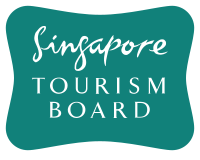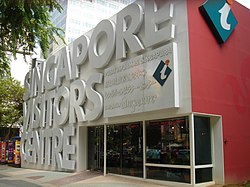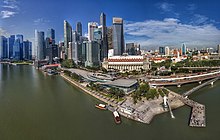
Tourism in Singapore is a major industry and contributor to the Singaporean economy. In 2019, 19,114,002 tourists visited the country, which was the highest recorded number of arrivals since independence in 1965. As of 2023, as tourist arrivals recovers from the impact of the COVID-19 pandemic, there were a total of 13,610,404 international tourists that have visited Singapore, which was more than twice the country's total population.

Sentosa Island, known mononymously as Sentosa, is an island located off the southern coast of Singapore's main island. The island is separated from the main island of Singapore by a channel of water, the Keppel Harbour, and is adjacent to Pulau Brani, a smaller island wedged between Sentosa and the main island.

The Merlion is the official mascot of Singapore. It is depicted as a mythical creature with the head of a lion and the body of a fish. Being of prominent symbolic nature to Singapore and Singaporeans in general, it is widely used to represent both the city state and its people in sports teams, advertising, branding, tourism and as a national personification.

The Singapore Cable Car is a gondola lift in Singapore, providing an aerial link from Mount Faber on Singapore Island to the resort island of Sentosa across the Keppel Harbour.
The following lists events that happened during 2005 in Singapore.
The following lists events that happened during 1964 in Singapore.

The Southern Islands is a planning area consisting of a collection of islets located within the Central Region of Singapore, once home to the native Malay islanders and sea nomads before they were relocated to the mainland for urban redevelopment and future use. The islands that form the planning area are Kusu Island, Lazarus Island, Pulau Seringat, Pulau Tekukor, Saint John's Island, Sentosa and the two Sisters' Islands. The islands encompass a total land area of about 5.58 square kilometres (2.15 sq mi). The Sentosa Development Corporation oversaw the development and maintenance of these offshore islands south of Singapore from 1976 to March 2017, when it handed it back to the Singapore Land Authority.

Mount Faber, formerly Telok Blangah Hill, is a hill about 94 metres (308 ft) in height, located in the town of Bukit Merah in the Central Region of Singapore. It overlooks the Telok Blangah area and the western parts of the Central Area. The summit is accessible by Mount Faber Road or Mount Faber Loop via Morse Road, but there are many footpaths or trails leading up the hill. The main paths are: Marang Trail, which leads from Marang Road at the Harbourfront MRT station, and the Southern Ridges Park Connector which connects from Telok Blangah Hill Park, Kent Ridge Park, and Henderson Waves.

The Sentosa Monorail was a monorail system which served as the main means of transportation on the island of Sentosa in Singapore, and has been replaced by the new monorail system, the Sentosa Express. The system was constructed at a cost of S$14 million by Von Roll of Switzerland, who also built the Singapore Cable Car.
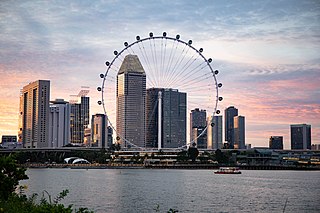
This article shows the notable future developments in Singapore. Most of them are currently under construction with most to be completed within the next five years.
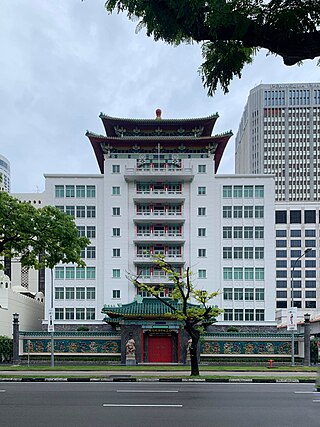
The Singapore Chinese Chamber of Commerce and Industry is a business chamber located in Singapore.

Resorts World Sentosa is an integrated resort on the island of Sentosa, which is located off the southern coast of Singapore. The key attractions within RWS include one of Singapore's two casinos, Universal Studios Singapore theme park the Adventure Cove Waterpark, as well as the S.E.A. Aquarium, which is the world's second largest oceanarium.
Masaru Yanagisawa was the Honorary Tourism Consul of the Singapore Tourism Board (STB), and the Chairman of the Hakodate Singapore Society. He played an important part in establishing the links between the Hakodate International Tourism and Convention Association (HITCA) and the STB, which facilitates tourism and business exchanges between the two cities.
The Ministry of Trade and Industry is a ministry of the Government of Singapore responsible for the formulation and implementation of policies related to the development of business, trade and industry in Singapore.
Tourism in Mauritius is an important component of the Mauritian economy as well as a significant source of its foreign exchange revenues. The tourism industry is also a major economic pillar on the island of Rodrigues; however, tourism has not been developed in Agaléga Islands. Mauritius is mostly appreciated by tourists for its natural environment and man-made attractions, the multi-ethnic and cultural diversity of the population, the tropical climate, beaches and water sports.

Merlion Park is a famous Singapore landmark and a major tourist attraction, located at One Fullerton, Singapore, near the Central Business District (CBD). The Merlion is a mythical creature with a lion's head and the body of a fish that is widely used as a mascot and national personification of Singapore. Two Merlion statues are located at the park. The original Merlion structure measures 8.6 meters tall and spouts water from its mouth. It has subsequently been joined by a Merlion cub, which is located near the original statue and measures just 2 metres tall.
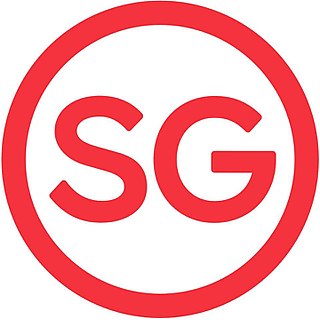
Passion Made Possible is the destination brand of Singapore, jointly launched on 24 August 2017 by Singapore Tourism Board (STB) and Economic Development Board (EDB). Passion Made Possible marks the rebranding of the Singaporean brand, replacing the previous YourSingapore campaign.

Sentosa Musical Fountain, also known as the Magical Fountain of Sentosa, or as the Musical Fountain by locals, was a former musical fountain water feature and entertainment venue made by Waltzing Waters on Sentosa Island in Singapore. It was located on a now-demolished portion of the Imbiah Lookout entertainment zone on the island. The Musical Fountain was officially opened on 11 June 1982, and ceased operations 25 years later on 26 March 2007, and was demolished that same year. The venue arena could accommodate more than 5000 people. It hosted five different shows through the 25 years it had been in operation, including the famous Magical Sentosa show which ran during the last 5 years of the fountain's operations.
The Seychelles Tourism Board (STB), a public/private sector body headed by CEO Mrs. Sherin Francis, with Mrs. Kathleen Mason as Chairperson, oversees most aspects of Seychelles' tourism industry whose Minister is Mr. Didier Dogley. The Seychelles Tourism Board is responsible for the promotion and marketing of the Seychelles islands as the preferred tourist destination.
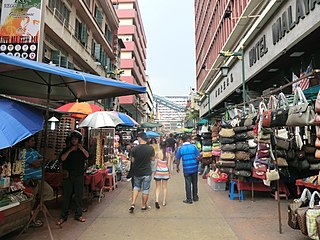
Fashion tourism is a niche market segment evolved out of three major sectors: Creative Tourism, Cultural Tourism and Shopping Tourism. Fashion Tourism can be defined as “the interaction between Destination Marketing Organizations (DMOs), trade associations, tourism suppliers and host communities, with people travelling to and visiting a particular place for business or leisure to enjoy, experiment, discover, study, trade, communicate about and consume fashion.”
